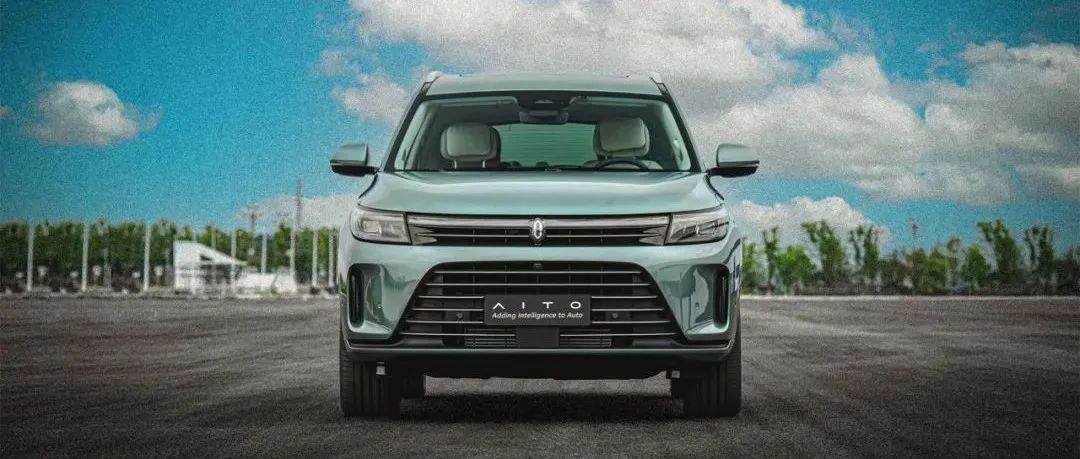Author: GeekCar
Who were the top three hottest cars in the first half of 2022? The Ideal L9, the XPeng G9, or the Aito M7? None of the above. It was the Mercedes-Benz GLS, BMW X7, and Audi Q7 because these three vehicles were frequently featured in the releases of large SUVs, and the frequency was much higher than in previous years.
Tonight, Yu Chengdong once again defined the million-dollar luxury car at the Aito M7 launch event. Now, not only are CEOs of automobile companies defining million-dollar luxury cars, but even CEOs of electronic consumer goods are as well. It makes me wonder: has defining million-dollar luxury cars become a prerequisite for every CEO’s curriculum?

Compared to Li Xiang, Yu Chengdong’s definition is more exaggerated. He used words such as “the best,” “top-level,” “leading by a large margin,” and “unmatched” several times during the entire launch event. I believe that not only did the spectators at the event feel this way, but even advertising law would also be greatly impressed.
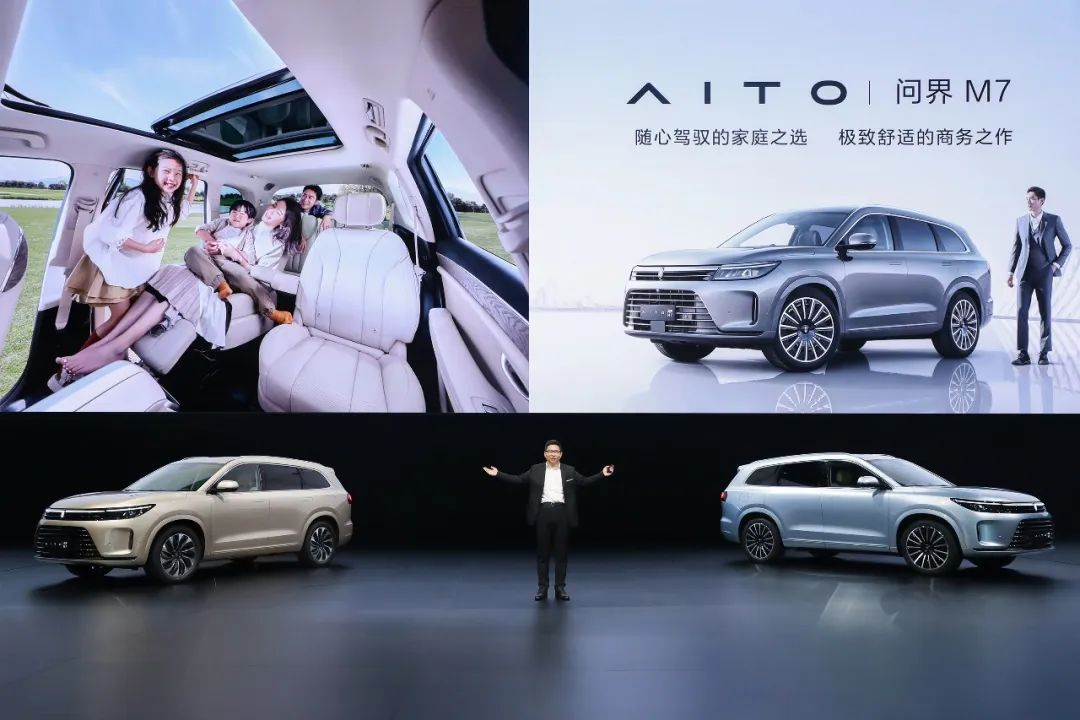
Confronting the price and product power of Ideal ONE
The comfort edition of the Aito M7 is priced at 319,800 yuan, the luxury edition is priced at 339,800 yuan, and the flagship edition is priced at 379,800 yuan. Looking at the pricing of the entry-level and mid-range models, the Aito M7’s competitor is the Ideal ONE.
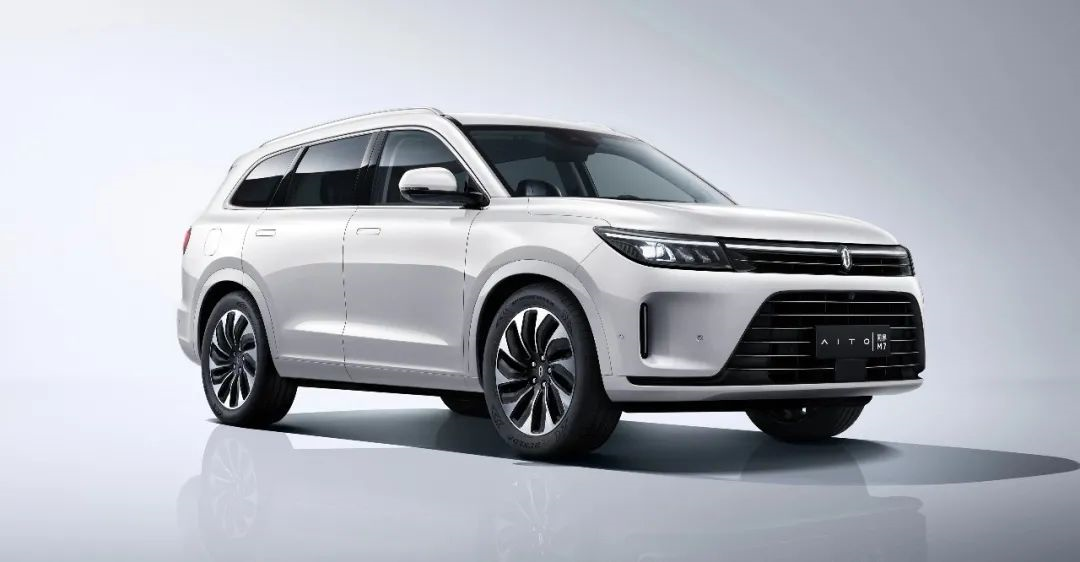
Many people may think that Ideal ONE has a more obvious advantage in the market, but since its launch at the beginning of the year, the Aito M5 has sold 7,000 units in a single month, surpassing most new EV companies in terms of sales growth rate. This shows that backed by Huawei, the Aito is not inferior to its competitors in terms of brand influence.# The Wonders of the Changan M7’s Spacious Interior
According to Yu Chengdong, the Changan M7 is a luxury MPV that aims to satisfy the highest standards in terms of space. The vehicle measures 502019451775mm, with a wheelbase of 2820mm, similar to that of the Ideal ONE. Surprisingly, despite having a wheelbase 60mm shorter than the M5, the M7 offers more usable space.
The Changan M7 features a three-row, six-seat layout, designed to optimize the cabin space and increase interior integration. The high-integrated five-in-one hybrid powertrain (engine, generator, reducer, dual electronics, and electric drive) also saves up engine compartment space and shortens the distance from the front wheel center to the front pedal.
To make the most of the interior space, the M7 has forward-positioned front seats, while the third row is pushed backwards. The backrest thickness is also reduced for more longitudinal passenger space, resulting in 2605mm of total interior space for the first, second, and third rows. The space is comparable to that of several million-dollar SUVs on the market.
Changan M7’s body size also offers a minimalist approach to the vehicle’s “public area,” providing an adequate vehicle size that offers the user considerable freedom concerning car-size anxiety, especially for city-dwellers.
In terms of interior storage, the Changan M7 offers users an excellent solution for organization, making the most of the available space. The vehicle has 14 storage spaces in total, providing users with ample areas to store their belongings. The left side of the steering compartment has a new storage area, allowing users to store anything from sunglasses to their vehicle registration documents. The lower section of the central armrest also provides a large, enclosed storage space for various items such as shoes, tablets, foldable umbrellas, and handbags. Additionally, the second row seats allow passengers to store their most frequently used items, like computer bags, briefcases, or even handbags, in a temporary storage area built into the middle aisle, allowing for quick and easy access upon exiting the vehicle.The attention has also been paid to the quietness of the cabin. Aiways U7 adopts low wind noise body, double-layer sound insulation glass, low noise silence tires, and 156 body wind noise control technologies, combined with excellent vehicle airtightness, effectively isolating external and road noise transmission. You can have a simple experience in the above video.
Active noise reduction is another aspect. On the one hand, it adopts the industry-leading amplifier active noise reduction technology, which can effectively reduce the noise by 12.3dB and eliminate 80% of the noise. On the other hand, in terms of electric drive, it uses the rotor arc patent technology to effectively reduce the near-field noise by 40%; the reducer gear iterative optimization can effectively reduce the in-vehicle order noise by 30%; the use of carrier frequency expansion technology realizes high-speed ripple current “0” howling; the pure idle air conditioning noise in the car is as low as 35dB, and the working noise of the amplifier is only 38.7 dB. The in-vehicle noise under high-speed conditions of 120Km/h is only 63dB.
In terms of power system, Aiways U7 is equipped with the Huawei DriveONE pure electric drive platform, and the front cabin adopts a five-in-one amplifier powertrain.
Under full fuel and full electricity condition, the rear-wheel-drive version of Aiways U7 can achieve a CLTC cycle range of 1220 kilometers and a CLTC cycle electric range of 230 kilometers. The four-wheel-drive version of Aiways U7 can achieve a CLTC cycle range of 1100 kilometers and a CLTC cycle electric range of 200 kilometers. The vehicle energy consumption of the rear-wheel-drive version is as low as 5.8L/100 kilometers under CLTC cycle conditions, and the four-wheel-drive version is as low as 6.3L/100 kilometers.
At the press conference, Yu Chengdong not only targeted the fuel consumption of three million luxury cars but also compared with Ideal L9, demonstrating that this product is not only aimed at the million-dollar market but also the five million-dollar market (joke).
It is equipped with a dual-permanent magnet synchronous motor composed of a dual-motor four-wheel drive scheme. The maximum output power of the four-wheel-drive version of Aiways U7 is 330kW, and the zero-to-100-kilometer-per-hour acceleration time is 4.8 seconds for the four-wheel-drive version and 7.8 seconds for the rear-wheel-drive version.
All apps can enter the car system, no one can do it in the world!
Regarding the intelligent cockpit, the interaction hardware consists of a 10.4-inch curved full LCD instrument panel and a 15.6-inch 2K HDR intelligent central control screen, with Huawei HarmonyOS intelligent cockpit system as the software.
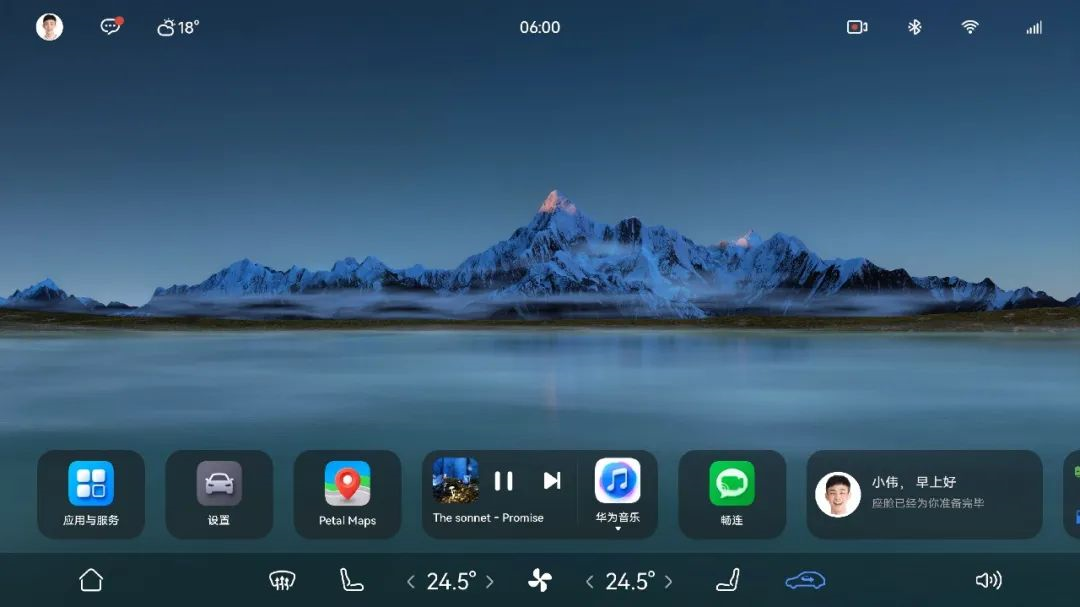
During the entire press conference, the most exciting moment for Yu Chengdong was when he introduced the “Super Desktop” function of the car system. The OTA-upgraded “AITO” car system not only supports seamless access to HarmonyOS mobile terminal applications, adapts to the car interface display, and enables car interface reverse control, but also supports phone-car hardware mutual calling.
The AITO M7 supports more than 3,400 commonly used Huawei Hongmeng system mobile applications, including more than 200 top-level seamless access applications.
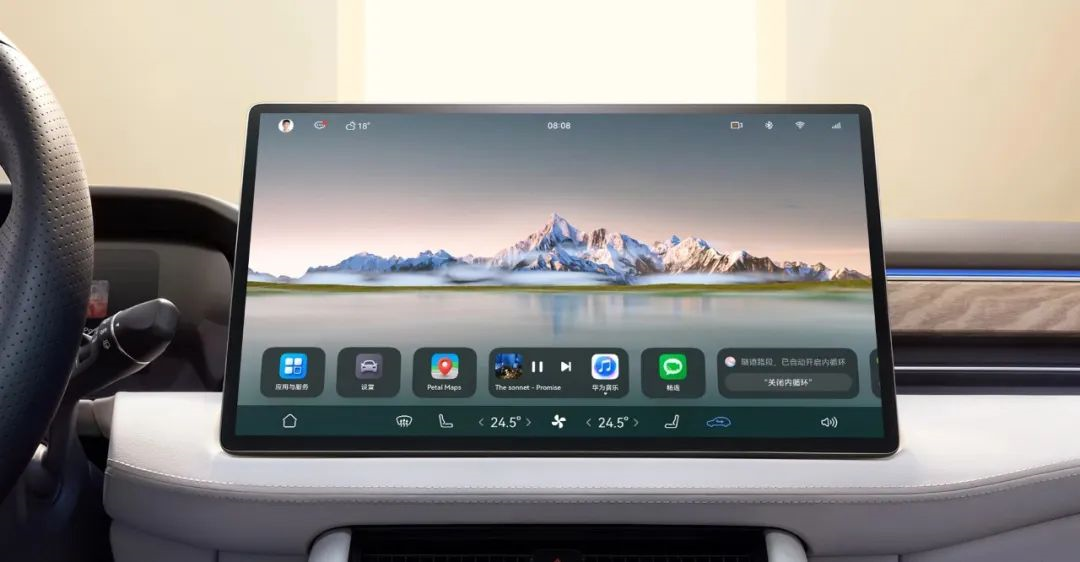
Of course, we also have some doubts about the matter of mobile applications entering the car system. We have previously experienced a vertically-screened car system that was built in with the native Android ecosystem, on which the car version of bilibili was installed. However, in the actual experience, the “phone application in car” function was not as good as expected. There are two problems: one is that the usage logic is not compatible, and the other is that the smoothness of use cannot be compared to that of smartphones.
The playback mode that most long video software adapts to is horizontal screen, so when watching bilibili on the vertically-screened car system screen, the video can only occupy one-third of the screen space, cannot be enlarged, and the remaining two-thirds of the space is useless information.
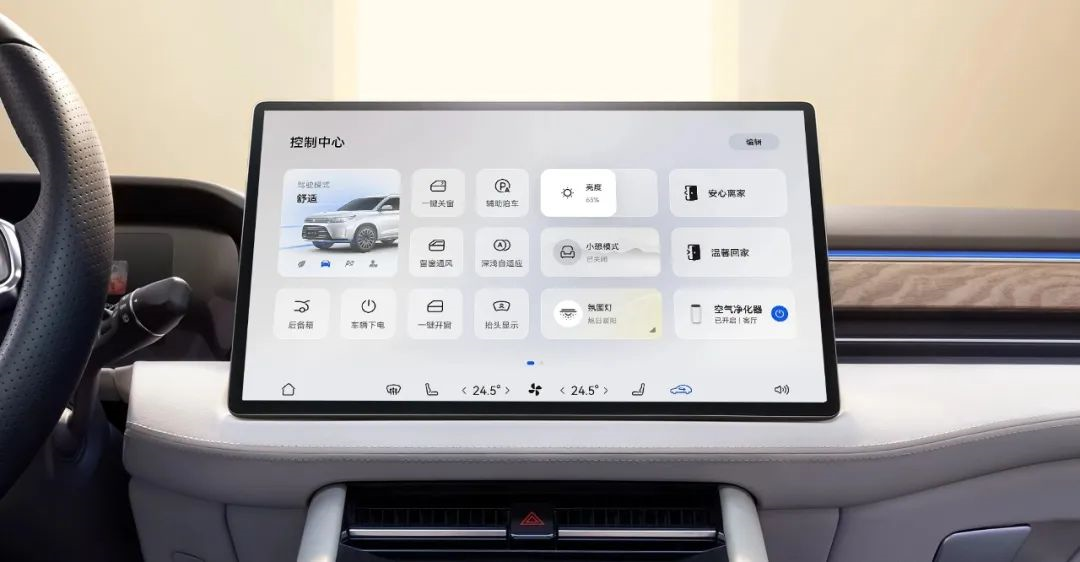
Therefore, there is also a saying in the industry that “vertical screen is strong in interaction, and horizontal screen is strong in entertainment”. The central control screen on the AITO M7 is horizontally screened, so facing short video applications like TikTok in vertical screen mode, the horizontal screen playback effect is somewhat limited. The hardware will restrict the experience of phone applications entering the car system, and it is difficult to achieve the experience of being able to use it horizontally and vertically like a smartphone.
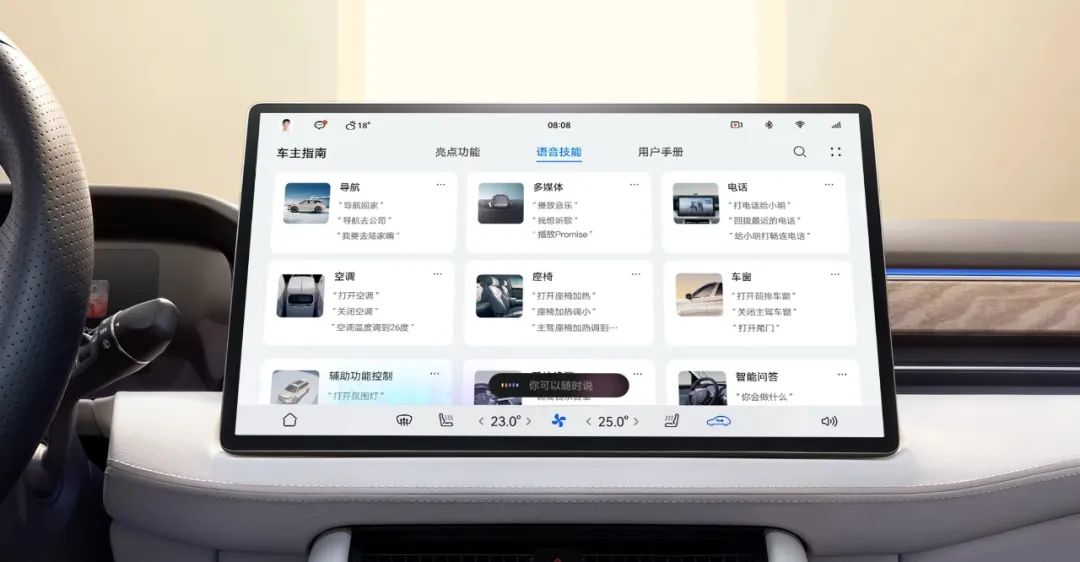 In addition to this, the Wenjia M7’s car voice system features intelligent four-tone zone accurate recognition, visualized speech, and 60 seconds of continuous conversation. Meanwhile, it can provide users with intelligent reminders and service recommendations. What does “visualized speech” mean? For example, as mentioned above, when Huawei deeply integrates voice control with the car’s ecosystem, any application installed in the car’s system can be voice-controlled.
In addition to this, the Wenjia M7’s car voice system features intelligent four-tone zone accurate recognition, visualized speech, and 60 seconds of continuous conversation. Meanwhile, it can provide users with intelligent reminders and service recommendations. What does “visualized speech” mean? For example, as mentioned above, when Huawei deeply integrates voice control with the car’s ecosystem, any application installed in the car’s system can be voice-controlled.
Matched with the intelligent cockpit is the HUAWEI SOUND deluxe audio system. The Wenjia M7 is equipped with a 19-unit professional audio (15 for the car body, and 4 for the headrests) with a 7.1 surround sound field. In addition, the Wenjia M7 adds the ENC active noise reduction function (subsequent OTA updates). It reduces noise the driver and passengers feel by using the noise emitted by the in-car speakers and the noise inside the cabin interacting with each other. For the first time outside of the car, the front and rear dual speakers are equipped with dual-channel 27W wide audio.
Huawei also has a persistent commitment to energy supplementation for electronic consumer products. The Wenjia M7 is the first car to be equipped with dual wireless fast charging and four wired fast charging (two 66W, two 18W).
The 40W wireless fast charging of the Wenjia M7 can boost the battery life of the Huawei P50 by about 60% in just 30 minutes. The two front wired fast charging ports make it easy for the front passenger to charge a laptop anytime, anywhere, meeting the needs of mobile office work. Additionally, the trunk is equipped with a 220V power supply and 3500W reverse charging.
During the press conference, one of the key features that Yu Chengdong emphasized was the zero-gravity seats in the second row of the Wenjia M7, even comparing them to his own Maybach.
Traditional business seats only provide users with leg rests and seat backs that can be tilted backward, but this is not the most comfortable posture.According to the study and verification of zero gravity angle, the AITO zero gravity seat selects various backrest angles in the range of 100° to 120°. Bone muscle dynamic model simulation testing and dynamic and static seat comfort experiments are conducted. The conclusion is that when the thigh and torso angle is 113°, it is the most suitable comfort curve for the human body. Therefore, the AITO M7 zero gravity seat can achieve a 113° angle between the thigh and the body torso. Please refer to the video for specific riding experience.

AITO zero gravity seat supports one-key electric control to switch between sitting posture and “zero gravity” posture, and users can also personalize and adjust the seat angle in multiple positions according to their own preferences.
Finally
Benchmarking against million-dollar luxury cars is actually a manifestation of product confidence, as Li Xiang said on Weibo, “The sales price of the main large and medium-sized SUV models of BBA domestically produced after will be less than 500,000 yuan. Consumers will be the biggest beneficiaries.”
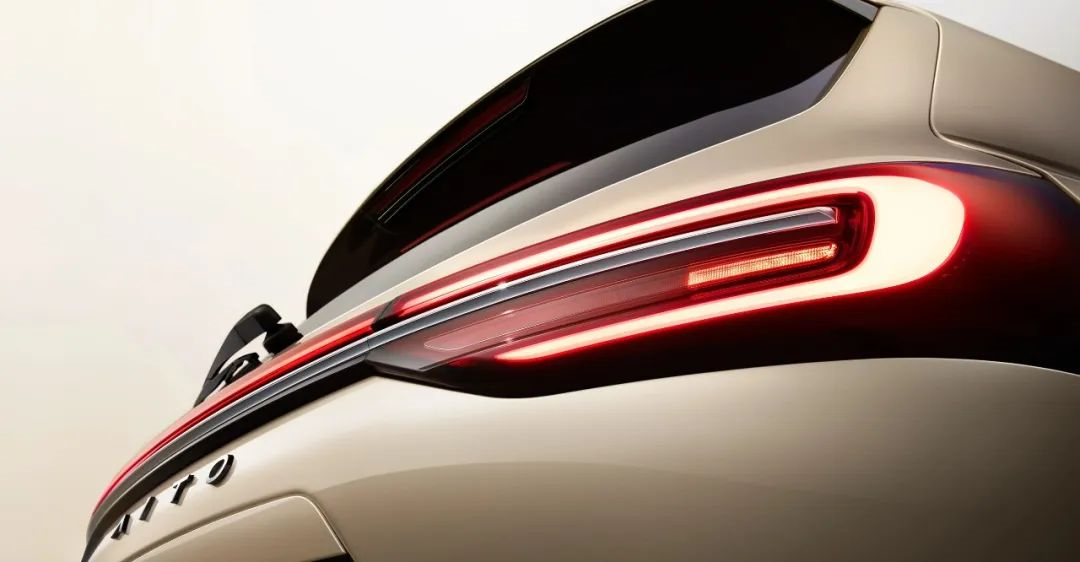
Intense competition will enhance the product power of independent brands, while also making more users think deeply whether it is worth paying a premium for luxury brands when the product power is the same.
This article is a translation by ChatGPT of a Chinese report from 42HOW. If you have any questions about it, please email bd@42how.com.
